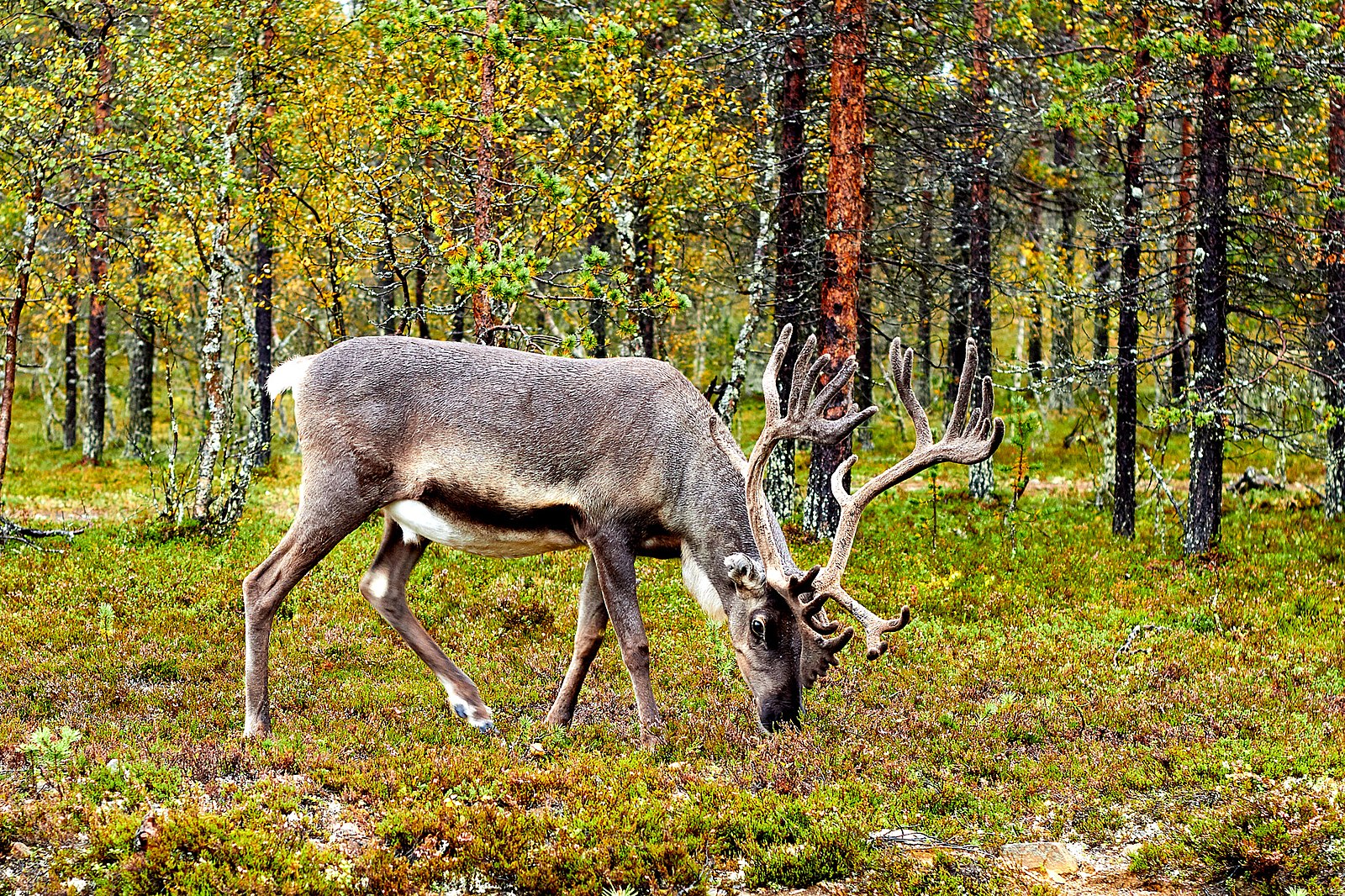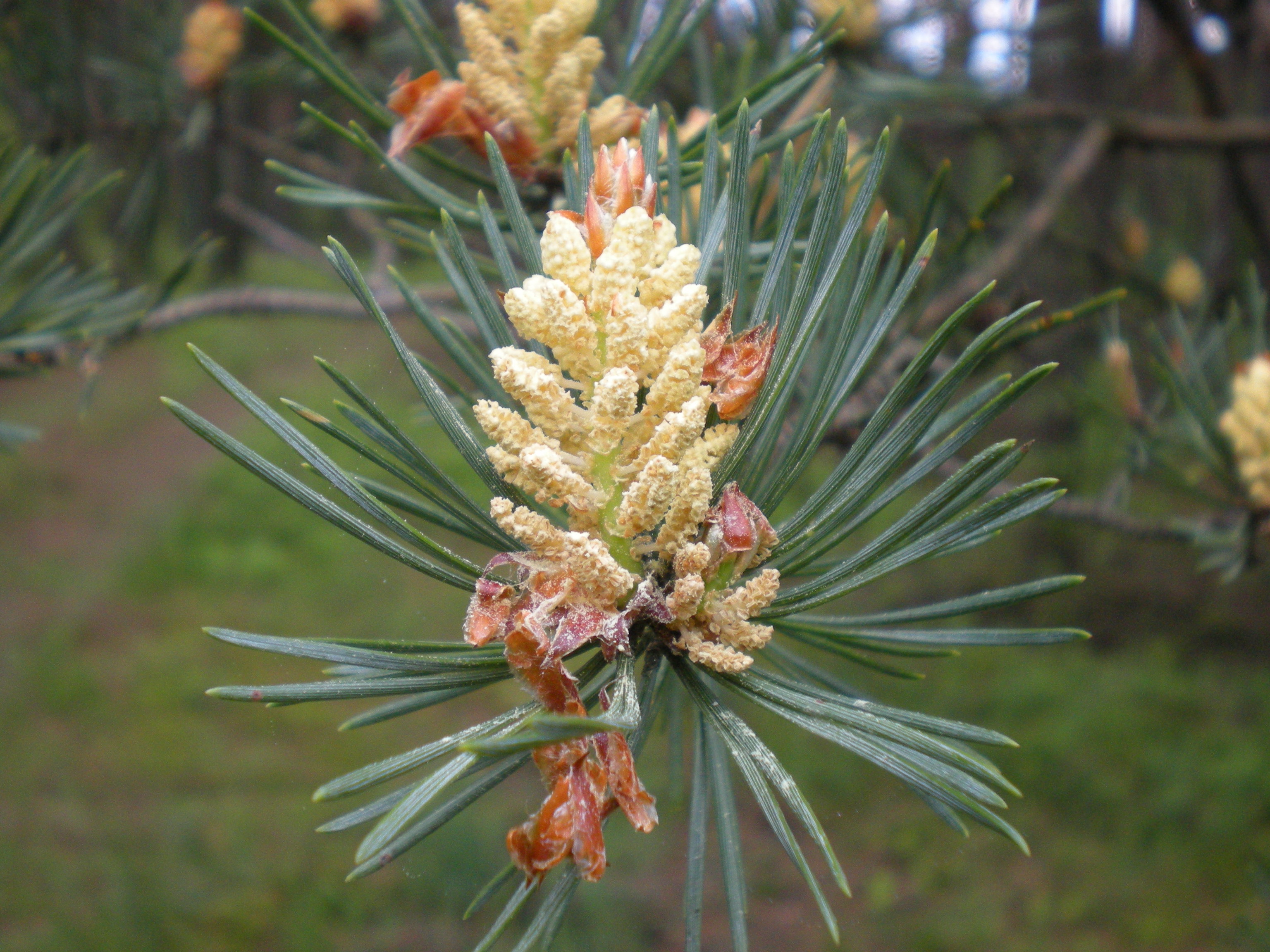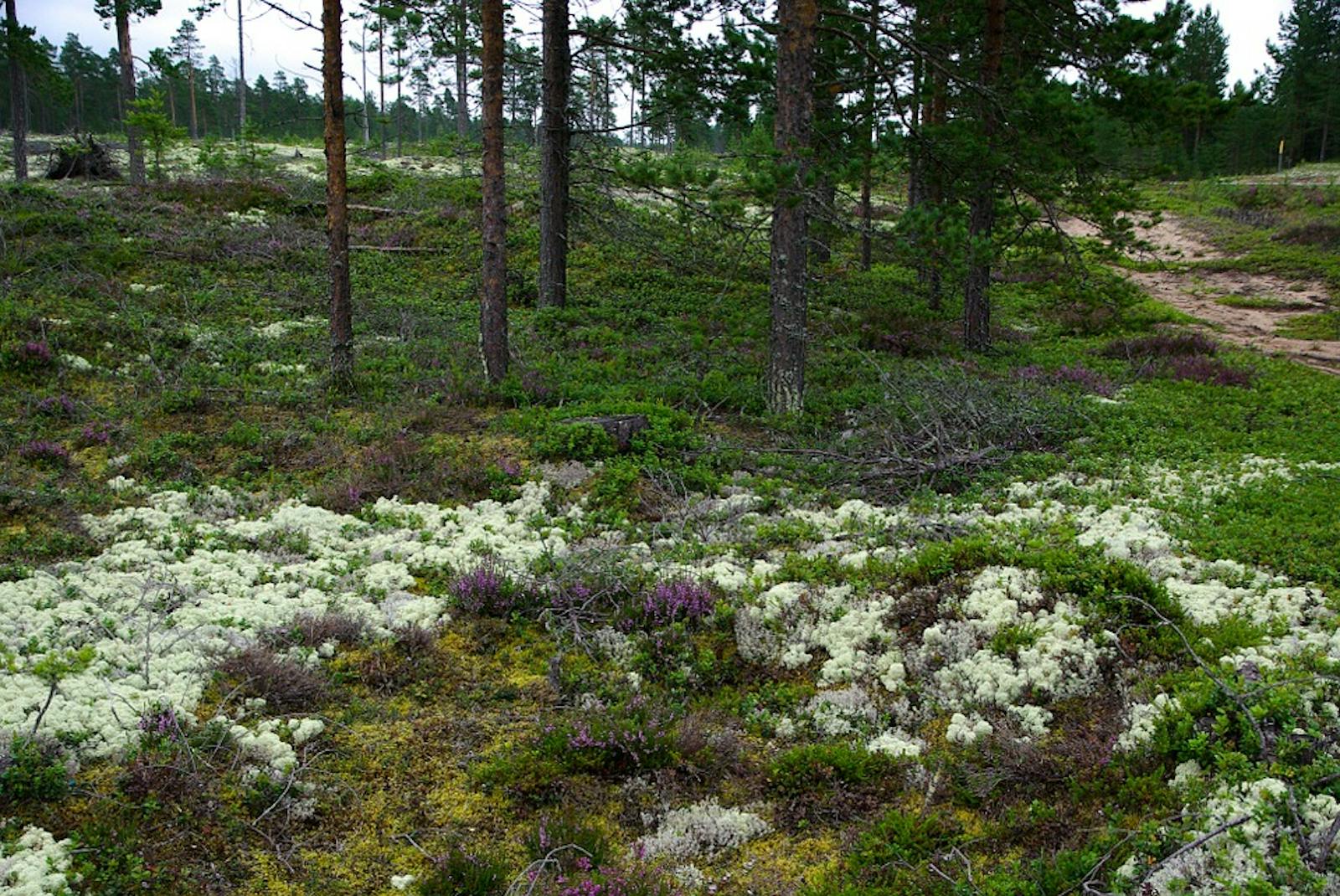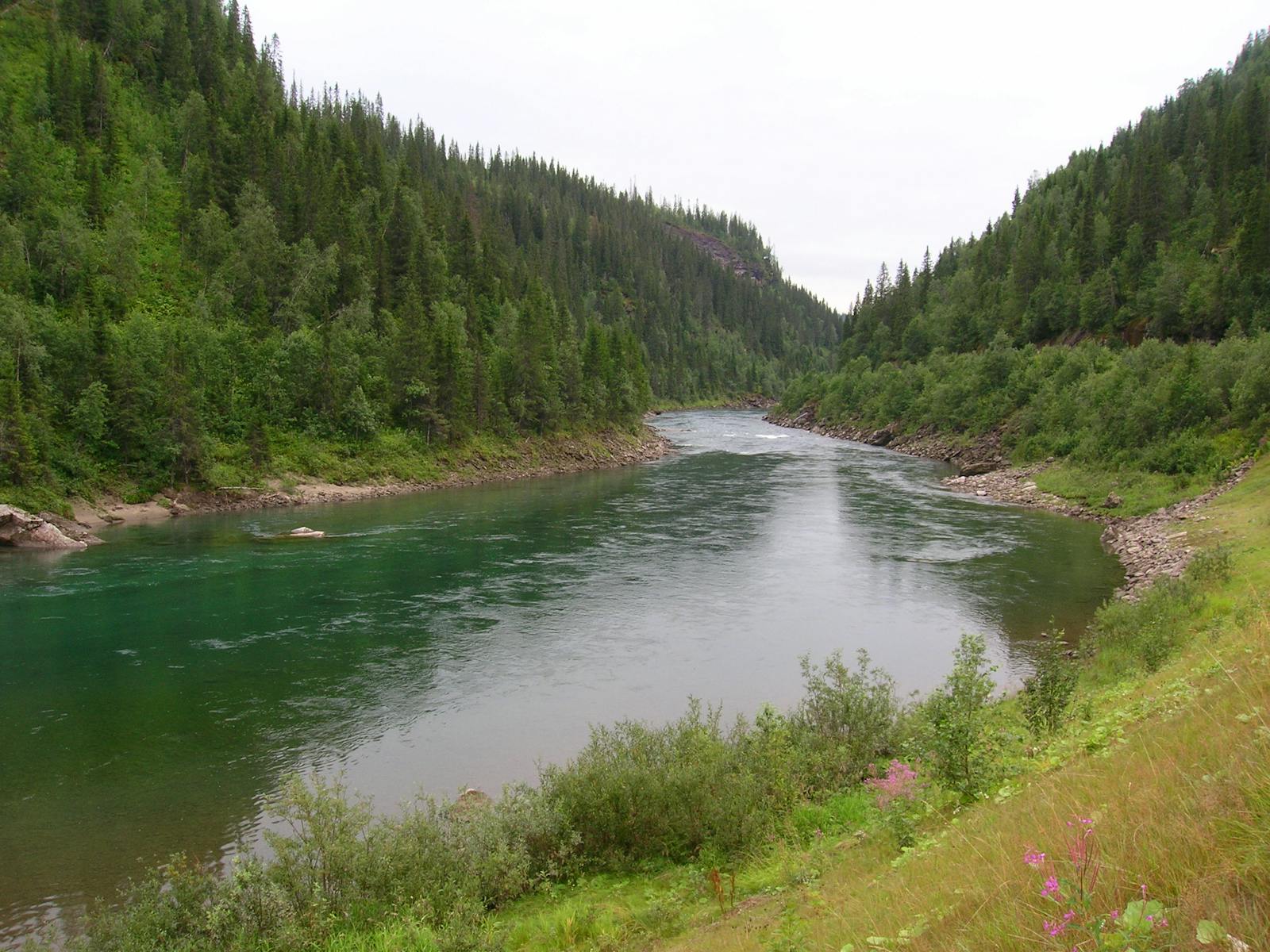Scandinavian and Russian Taiga
The ecoregion’s land area is provided in units of 1,000 hectares. The conservation target is the Global Safety Net (GSN1) area for the given ecoregion. The protection level indicates the percentage of the GSN goal that is currently protected on a scale of 0-10. N/A means data is not available at this time.
Bioregion: Ural Mountains & West Eurasian Taiga Forests (PA8)
Realm: Subarctic Eurasia
Ecoregion Size (1000 ha):
216,198
Ecoregion ID:
717
Conservation Target:
51%
Protection Level:
2
States: Russia, Finland, Sweden, Norway
Fairytale forests laden with lichen and shrouded in moss span this vast expanse of Northern Europe. Underfoot, lush bogs are festooned with wildflowers and areas of open water in streams, lakes, and ponds. Thousands of islands flank a ragged coastline, where low-lying brackish fens and meadows play host to great flocks of migratory birds. Hidden amongst the woodland, wild forest reindeer graze by secluded mires. They are distinguished from their domesticated cousins by longer legs, wider hooves, and narrower v-shaped antlers: an ideal physique for navigating a snow-cloaked forest.

The flagship species of the Scandinavian and Russian Taiga ecoregion is the Finnish forest reindeer. Image credit: Mathew Schwartz, Creative Commons
This is the largest ecoregion in Europe, stretching across Norway, Sweden, Finland, and into the northern part of Russia. There is a cool, humid climate; continentality is most pronounced in the Russian Federation, whilst the Scandinavian region receives a greater maritime influence. The habitat can be described as either boreal forest or Western taiga, and is dominated by Norway spruce and Scots pine, mixed with downy and silver birch.
The additional presence of Russian larch is a distinctive feature of European Russian taiga. Mosses, lichens, and dwarf shrubs blanket the forest floor, and rivers and lakes are fringed with alder, aspen, rowan, and willow. Such wetlands are copious; this region hosts the greatest number of lakes and largest bogs in Europe, and in the North, peatlands can make up 50% of the land surface.
Considering the high latitude, this region is relatively species-rich, including charismatic mammals such as Eurasian lynx, brown bear, Eurasian beaver, wolverine, and Eurasian elk. Endemic flowers include the dandelion Taraxacum nylandicum and the buttercup Ranunculus valtae. The Saimaa ringed seal is one of few endemic animals in this ecoregion; it is found only in Lake Saimaa, which is Finland’s largest lake. The elusive Finnish forest reindeer is endemic to the Finnish and Russian parts of this ecoregion, where it prefers the safety of dense boreal forest. The current population of around 4,500 individuals is chiefly threatened by mortality from traffic collisions, and in-breeding with domestic reindeer.

Ripe scout's pine cone. Image credit: Creative Commons
Removed from the centers of economic development, the boreal forest is the least exploited forest biome in Europe. The Russian Federation is unique in Europe as it still maintains large tracts of intact taiga. Conversely, though forest cover may be high in some parts of Scandinavia, natural forest is rare: commercial forestry has favored conifers at the expense of other native species.
A long history of grazing and haymaking in other areas has generated semi-natural habitats of high conservation value, such as the Nordic alvar. Population density varies, with vast unpopulated regions in the North, and increased urbanization towards the South. Notable protected areas include the Paanayarvi National Park in the Russian Federation, Femundsmarka National Park in Norway, Skuleskogen National Park in Sweden, and Helvetinjärvi National Park in Finland.
Public attitudes towards large predators are still of concern, and populations are threatened by hunters; this is despite decreasing predator numbers and a general lack of conflict with humans. A shift in forestry method from selective harvesting to clear-cutting in the 20th century led to huge losses of forest biodiversity; due to challenging climate and soil conditions, the regeneration of mature forest is very slow. A few national programs exist that aim to buy the remaining 5–10% of natural old-growth forests across the ecoregion, such that they can be taken out of production and be preserved.
Efforts to maintain the genetic integrity of Finnish forest reindeer have involved the construction of fences to separate them from domestic reindeer. Furthermore, a compensation scheme for damages to agriculture and forestry through reindeer grazing of crops and saplings has ensured a positive public attitude towards the species.
The priority conservation actions for the next decade will be to: 1) invest in research into sustainable forest management specific to natural boreal forest dynamics; 2) ensure forestry is directed at forests of lower conservation value; and 3) emphasize positive attitudes to large animals through outreach and compensation schemes.
Citations
1. European Commission Environment. The Boreal Region. [Online]. [Accessed 17th July 2019]. Available from: http://ec.europa.eu/environment/nature/natura2000/biogeog_regions/boreal/index_en.htm
2. WildForestReindeerLIFE. 2017. The wild forest reindeer (Rangifer tarandus fennicus) of Finland: Conservation and recovery of historic range.
3. Shorohova, E., Kuuluvainen, T., Kangur, A. and Jõgiste, K., 2009. Natural stand structures, disturbance regimes and successional dynamics in the Eurasian boreal forests: a review with special reference to Russian studies. Annals of Forest Science, 66(2), pp.1-20.



.png?auto=compress%2Cformat&w=300)

